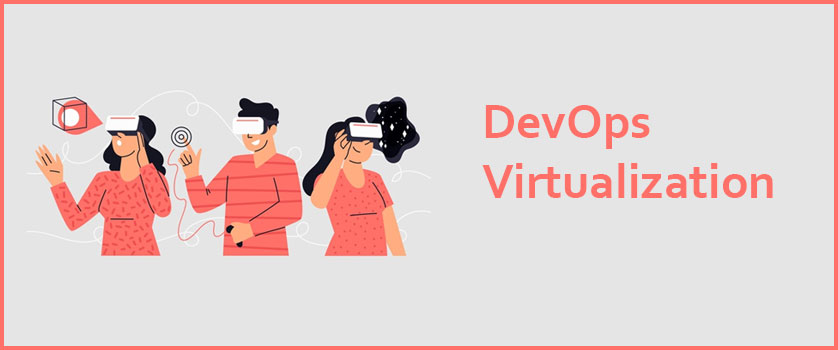


DevOps is one of the key enablers of rapid and consistent software development and deployment today, as it combines new strategies and methodologies to facilitate better team collaboration and continuous delivery of quality software or features.
Moreover, it uses technologies that power up the software development lifecycle and help it simultaneously increase the quality and rate of deployments by promoting collaboration and transparency throughout the process. Be it Cloud, Automation, or more, DevOps leverages various technologies and tools to create a valuable asset for organizations.
Another prominent methodology that helps DevOps ensure rapid, consistent, and stable deployments is virtualization.
In this article, we will unravel the concepts of Virtualisation and help you understand its role in DevOps.
Virtualization is the process that enables teams to create a useful virtual or simulated version/instance of the software on a single server, mimicking its various hardware and software environments. It helps build abstractions of the physical hardware components, between the actual hardware and the virtual instance, to create a combined pool of resources such as CPUs, storage, networking, memory, applications, and various other components.
These resources are then divided into multiple virtual systems known as Virtual Machines that are an emulation of hardware and software configurations. Each of these virtual machines run their own operating systems and act as independent software, even though it runs on a portion of the physical device.
The virtual machines are managed with hypervisors or virtual machine monitors (VMM), which is a piece of software, firmware, or hardware that is used to create and run virtual machines.
Hence, virtualizations and virtual machines enable maximum hardware utilization, allowing it to host numerous virtual machine configurations simultaneously without compromising performance.
Though new to the DevOps paradigm, the use of Virtualization can be sourced back to the 1960s, where various technologies that enabled virtualization were developed to give multiple users simultaneous access to systems that performed batch processing.
However, it was not until the early 2000s that the technology became widely popular, as several other solutions to the multiple users/single machine problems were already widespread, like time-sharing.
It was after organizations started updating their IT environments with less-expensive commodity servers, operating systems, and applications that virtualization finally found its footing, becoming the suitable solution to problems:
This became the foundation for virtualization’s widespread applicability and made it prevalent across enterprises today.
DevOps’ primary pursuit is to improve the speed and quality of software development, which is made possible by the extensive use of Virtualization. Virtualization is an integral part of DevOps that affects every aspect of the process, from development, testing, and deployment to operations, delivery, and maintenance.
With the help of this methodology, DevOps teams can use virtual services instead of production services and implement frequent and comprehensive testing, even if the key components are missing from the system architecture. It emulates the behavior of the essential components and removes key bottlenecks that might lead to a delay in release and time-to-market.
Other prominent areas where virtualization help DevOps are:
Nowadays, multiple virtualization types are used across industries to either virtualize one physical resource into many virtual resources or turn several physical resources into one virtual resource. Some of these critical types of virtualization are:
Some prominent advantages of virtualization are:
Despite having various benefits in DevOps, there are a few challenges of virtualization that pose a problem for the team. With that in mind, listed below are a few of these challenges of virtualization in DevOps.
Virtualization and containerization are two important technologies used by DevOps teams to optimize the software development, testing, and deployment process. While virtualization enables DevOps teams to develop and test applications within simulated environments and run the complete pools of devices available to consumers by testing deployment on virtual live environments, Containerization takes the process one step ahead.
Containerization furthers the virtualization concept using operating system (OS) kernels to run multiple applications within a single container. It provides a digital configuration that imitates hardware setups as well as the OS and libraries that the entire runtime environment encompasses.
These together help DevOps teams to achieve more with less like continuous deployment, enhanced stability and consistency, and resource utilization.
In the past few years, virtualization has helped DevOps remarkably reform software development and make it subject to fewer latent defects and issues. It has enabled maximum hardware utilization, reduced various excessive costs, and offered various other benefits to organizations worldwide. The technology uses automation and virtual machines to improve application reliability, device functioning, configuration, and memory state, which further guarantees the quality of the end product.
So, if you want to ensure maximum benefits with DevOps virtualization, it is important to have an effective virtualization strategy and toolchain in place, when adopting the industry’s most cutting-edge software engineering approach.